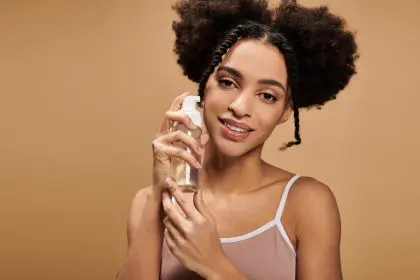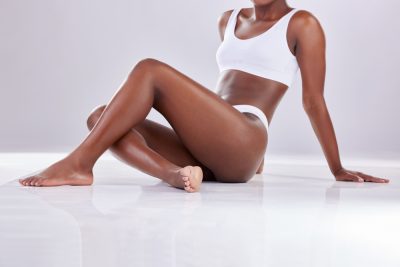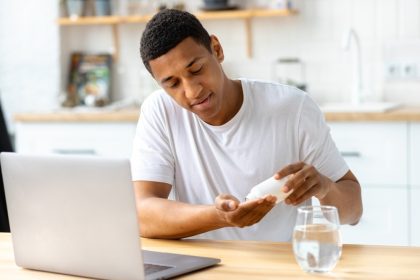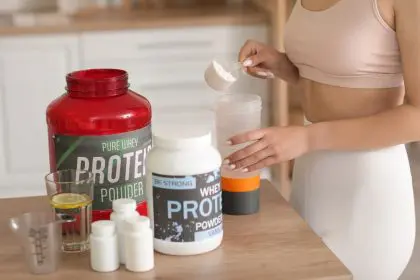The hidden dangers behind a popular tanning method
Dangerous beauty practices have persisted throughout history, with tanning remaining one of the most problematic. Despite widespread knowledge about skin damage from UV rays, some still pursue the “perfect tan” using risky methods like baby oil – a practice dermatologists unanimously condemn.
The allure of tanning with baby oil continues to capture attention on social media and in certain communities, despite mounting evidence of its significant health risks. This mineral oil-based product creates a reflective layer on skin that intensifies UV exposure, accelerating both visible tanning and invisible cellular damage.
Understanding the science behind baby oil tanning
Baby oil primarily consists of mineral oil with added fragrance. This petroleum byproduct creates a clear barrier on the skin’s surface that traps moisture but offers zero sun protection. Unlike sunscreen, which contains active ingredients designed to filter or block ultraviolet radiation, baby oil actually amplifies UV effects on skin.
When UV rays hit skin coated with baby oil, the oil’s reflective properties enhance their penetration into deeper skin layers. This accelerates melanin production – the body’s defensive response to damage – creating what appears as a tan but is actually visual evidence of cellular harm.
The appeal factor lies in how quickly baby oil produces visible results. The intensified UV exposure speeds melanin production, delivering a deeper tan in less time. This efficiency attracts those seeking immediate results, especially before vacations or summer events.
Scientific consensus on tanning safety
Dermatologists universally agree that no form of tanning is safe. Any color change in skin from UV exposure represents damage at the cellular level. This damage accumulates over time, potentially leading to premature aging, DNA mutations, and malignancies.
Baby oil tanning specifically presents heightened risks due to its complete lack of sun protection factor. Regular sunbathers using baby oil expose themselves to:
- Significantly increased skin cancer risk
- Accelerated photoaging (premature wrinkles, sunspots, and sagging)
- Greater likelihood of severe sunburns
- Permanent skin texture changes
- Immune system suppression in affected skin areas
- Exacerbation of existing skin conditions
Research demonstrates that even a single severe sunburn can double lifetime melanoma risk, and using products like baby oil dramatically increases burn potential. With skin cancer rates continuing to rise nationwide, dermatologists emphasize that any practice enhancing UV exposure represents a significant public health concern.
The myth of “natural” tanning alternatives
Some turn to natural oils like coconut or olive oil as supposedly safer alternatives, but these products offer no meaningful sun protection either. While they may contain trace antioxidants, their protective effects against UV radiation remain negligible.
The SPF misconception commonly circulates among tanning enthusiasts. Contrary to some claims, natural oils typically offer SPF values below 8 – far below the minimum SPF 30 recommended by dermatologists. Additionally, these oils lack broad-spectrum protection against both UVA and UVB rays.
More concerning is the misconception that applying baby oil over sunscreen creates a protective tanning experience. In reality, oils can degrade sunscreen effectiveness by breaking down protective compounds or creating uneven coverage. The combination actually undermines protection while creating a false sense of security.
Modern alternatives for achieving a sun-kissed look
The beauty industry has responded to skin cancer concerns with innovations offering bronzed skin without UV damage. Self-tanners containing dihydroxyacetone (DHA) interact with proteins in the skin’s surface to create color without UV exposure. These products have improved dramatically in recent years, eliminating the orange tint and streaking once associated with artificial tanning.
Professional spray tans provide another UV-free option, using specialized solutions applied evenly by technicians or automated systems. These treatments typically last 5-7 days and can be customized to match natural skin undertones.
For those seeking immediate color for special events, bronzing makeup products offer temporary tinting that washes off with regular cleansers. These products come in various formulations, from powders to lotions, and can be applied strategically for natural-looking dimension.
The medical perspective on sun protection
Dermatologists recommend a comprehensive approach to sun protection that prioritizes skin health over aesthetic preferences. This includes:
- Daily application of broad-spectrum sunscreen (minimum SPF 30)
- Reapplication every two hours during outdoor activities
- Protective clothing with UPF ratings
- Seeking shade during peak UV hours (10 a.m. to 4 p.m.)
- Regular skin examinations to monitor changes
The cumulative damage factor often goes underappreciated. UV exposure accumulates throughout life, with effects sometimes not appearing until decades later. This delayed consequence makes prevention particularly important, as damage cannot be fully reversed once it occurs.
Medical professionals emphasize that sunscreen use alone reduces melanoma risk by approximately 50 percent when used consistently. This statistic becomes even more significant considering that melanoma rates have been rising about 2 percent annually, with over 200,000 cases diagnosed yearly in the United States.
Changing cultural perceptions of tanned skin
The cultural association between tanned skin and health or beauty stems from relatively recent history. Before the 1920s, pale skin was the beauty standard across many cultures. The perception shifted when fashion designer Coco Chanel popularized suntans as a status symbol indicating leisure time and exotic vacations.
Modern understanding of UV damage has begun shifting perceptions again. Many celebrities and influencers now openly discuss embracing their natural skin tones and practicing sun safety. This cultural evolution presents an opportunity to redefine beauty standards around skin health rather than color.
Education campaigns emphasizing that tanned skin represents damage rather than health have gradually impacted public perception. Organizations like the Skin Cancer Foundation continue working to dispel myths around “healthy tans” while promoting positive associations with natural skin protection.
The future of safe skin care
As dermatological research advances, new technologies for skin protection continue emerging. Recent innovations include oral supplements that may enhance natural UV defenses, though these complement rather than replace traditional sun protection methods.
Clothing manufacturers increasingly incorporate sun-protective fabrics into everyday wear, making protection more convenient. These textiles maintain their protective qualities even when wet and offer consistent coverage without reapplication concerns.
The beauty industry continues developing sophisticated skincare formulations addressing both protection and aesthetic preferences. Modern sunscreens incorporate antioxidants, DNA repair enzymes, and skin-matching tints that protect while enhancing appearance.
By embracing these advances while rejecting dangerous practices like baby oil tanning, individuals can maintain both skin health and confidence – without sacrificing either to outdated beauty standards.















